When buying a tent, it’s easy to get overwhelmed by all of the parts and equipment you might need.
Footprints, storm flaps, vestibules… What even is a vestibule, anyway?
In this article, we’ll cover everything there is to know about tent vestibules: what are they, what do they do, and do you really need one?
Table of Contents
ToggleWhat Is a Tent Vestibule?
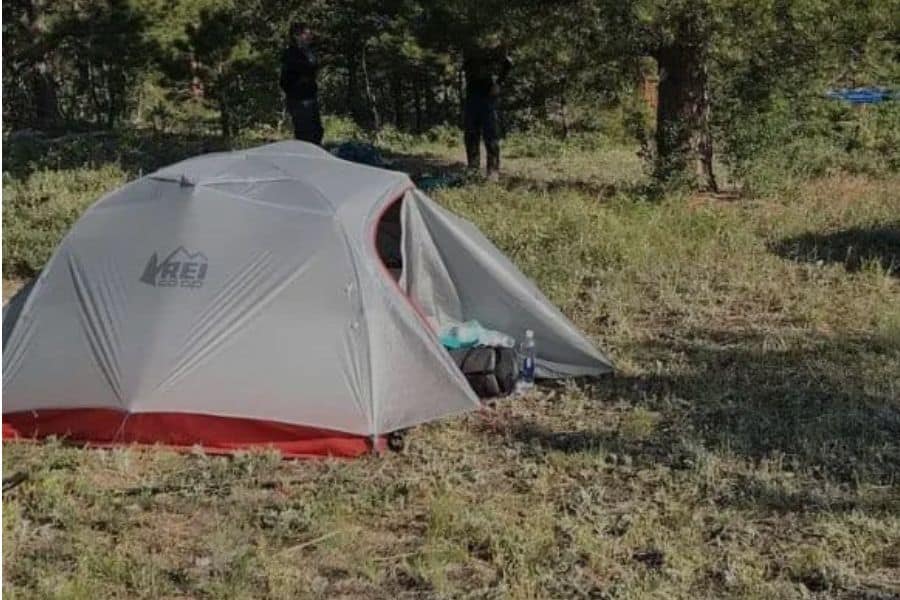
In short, a tent vestibule is a covered area at the front of a tent or along its sides.
Usually part of the rainfly, the vestibule is essentially an outdoor extension of the tent itself.
When you’re at the campsite, vestibules come in handy as an added space for gear storage and weather protection.
They’re a great spot to leave your dirty equipment before entering your tent, and can even be used as a cooking space if you’re dealing with bad weather.
Types of Tent Vestibules
Before we get into all the benefits of having a vestibule on your tent, let’s break down the three main types of vestibules available.
Front Vestibules
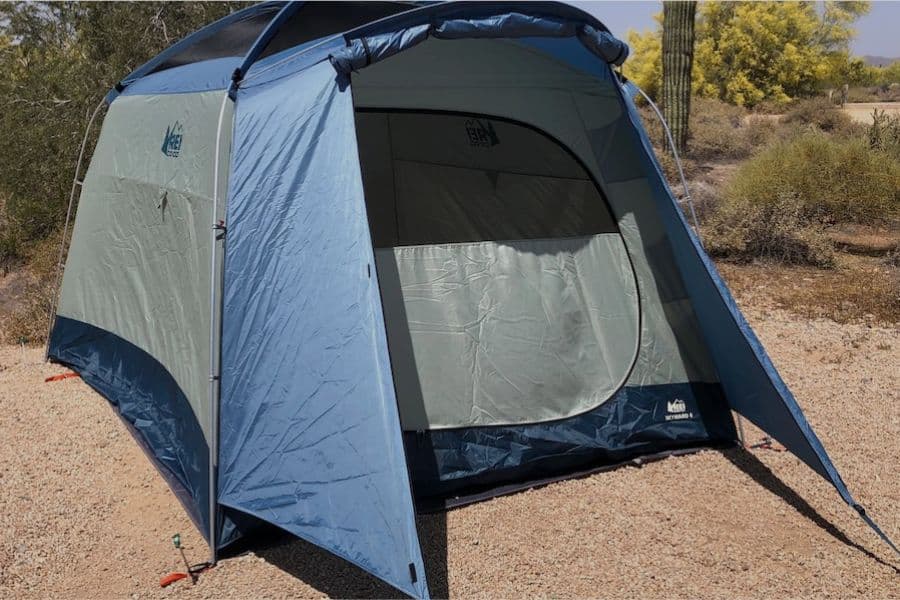
A front vestibule covers the entrance of the tent. They’re usually built into the rainfly and can be zippered down to keep the weather elements away from the entry area.
Tent vestibules can vary in size and shape depending on the tent model.
Smaller tents (1-person tents and 2-person tents) usually have a vestibule that is just a rainfly extension covering the entrance, which provides a small storage area for your equipment.
If your tent has only one door, this can mean your entry area can get cluttered.
On the other hand, vestibules on larger tents (4-person and above) often use poles to create an outdoor space for hanging out (and even cooking!).
This kind of vestibule will typically have its own zippered door and windows that provide natural light and airflow.
Side Vestibules
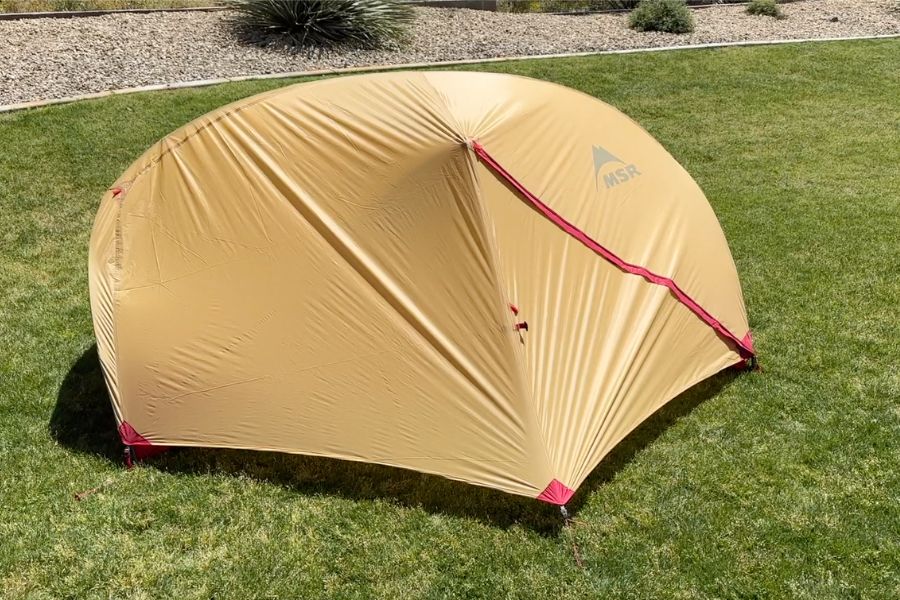
As the name suggests, a side vestibule is built into the longer end of your tent.
This type of vestibule is typical for 1, 2, and 3-person tents but is not usually seen in larger models.
Unlike the front vestibule, its side counterpart is usually not large enough to hang out underneath but does provide ample space for storing equipment when backpacking.
Because this vestibule type is mainly for storage, it’s fairly simple and attached to your rainfly, meaning you won’t have to worry about additional poles, fabric, or overall tent weight.
Many backpacking tents will have 2 side vestibules to double the gear storage area.
Add-On Tent Vestibules
Some tent models don’t have a vestibule as their base setup, so campers can buy add-on vestibules to attach to their tents when they need that extra outdoor space.
The amazing thing about add-on vestibules is their versatility. You can pack them when you’re camping with friends and driving up to the campsite, or leave them at home when you’re backpacking.
Read: The 9 Best Tents With Vestibules
Benefits of a Tent Vestibule
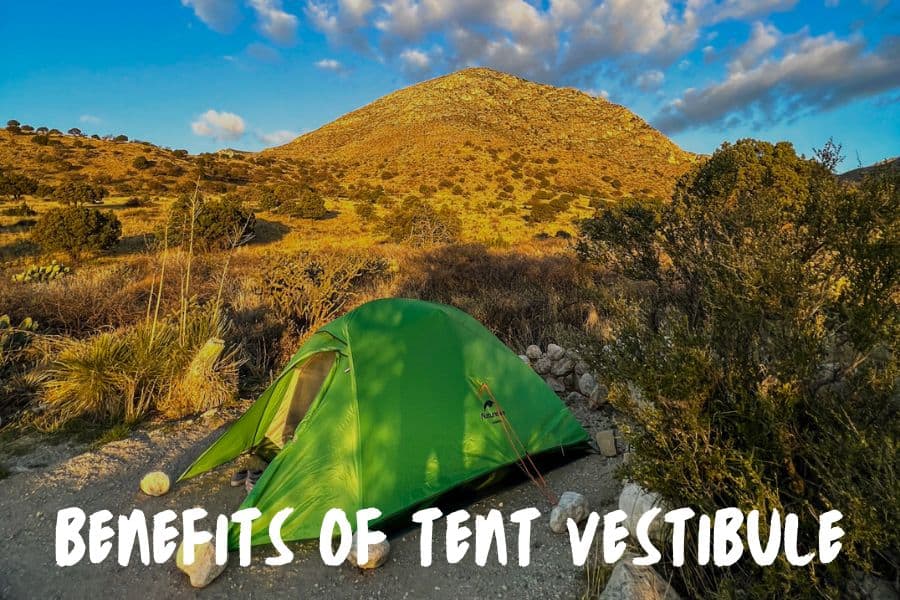
So, do you need a tent vestibule? Let’s talk about the benefits of having a vestibule on your next camping trip.
Additional Storage Space
First and foremost, a vestibule provides additional space for storing gear.
This is especially useful when your boots are dirty or your coat is drenched (ever get caught in a summer afternoon pour?). Having a vestibule means that you can keep dirty equipment outside of the tent, keeping your sleeping area clean and dry.
It also means that your dirty gear won’t get even more dirty, and will have the chance to dry out as you sleep.
Need to stash your backpack somewhere while you go collect firewood? You guessed it, the extra storage space in the vestibule can help there as well.
Protection from the Elements
Vestibules are made from the same material as the tent’s rainfly, meaning they have water resistance capabilities. At the very least, having a vestibule can help you keep rain from getting directly inside your tent during a storm.
In the case of a larger vestibule, you might be able to use it as a porch to watch the weather while remaining dry. In a similar vein, it can keep you covered from the sun during hot, summer days.
Increased Privacy
The majority of double-walled tents primarily use mesh for doors. While this helps with ventilation, it doesn’t provide us with much privacy. This is where vestibules come in.
These tent extensions can partially or fully cover the tent door. Meaning that you can enjoy the airflow without sacrificing your own privacy.
Is a Tent Vestibule Necessary?
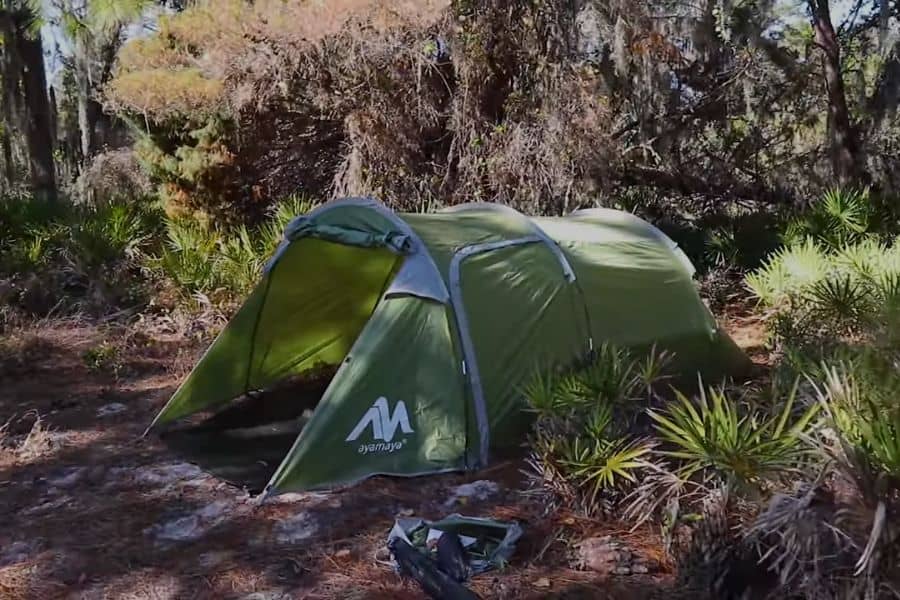
In short, a tent vestibule is not necessary. You can use your tent even if it doesn’t have one.
Still, having one comes in handy in several situations.
As we already established, not only it offers additional storage space, but also increases your protection from unfavorable weather.
If you plan on camping where there’s a high probability of rain, having a vestibule has its perks.
However, if you’re camping in nice, warm weather, having a vestibule is not necessarily required. And, if you’re backpacking, carrying a vestibule can weigh you down.
This is especially the case with larger front vestibules because they require extra material and poles to assemble. All in all, larger front vestibules can increase your backpack by at least a pound!
Ultimately, your decision to use a vestibule depends on the type of camping trip and size of the tent you’re planning on using.
Can I Buy a Vestibule Separately?
As you’ve probably noticed, not all tents come with vestibules. However, some models do have them as add-ons that can be purchased additionally in case you want to upgrade your tent.
This is typically the case with popular models, like the Big Agnes Big House or the REI Wonderland Tent.
Both models’ base versions only include short rain flies covering just the sides of the tent. But, by getting a vestibule, you can increase their weather protection and outdoor storage space.
As to where to find an add-on vestibule, it’s best to check the manufacturer’s store first. In the case of more popular models, you will be able to find them in other outdoor stores like REI or Backcountry.
Factors to Consider Before Buying an Add-on Tent Vestibule
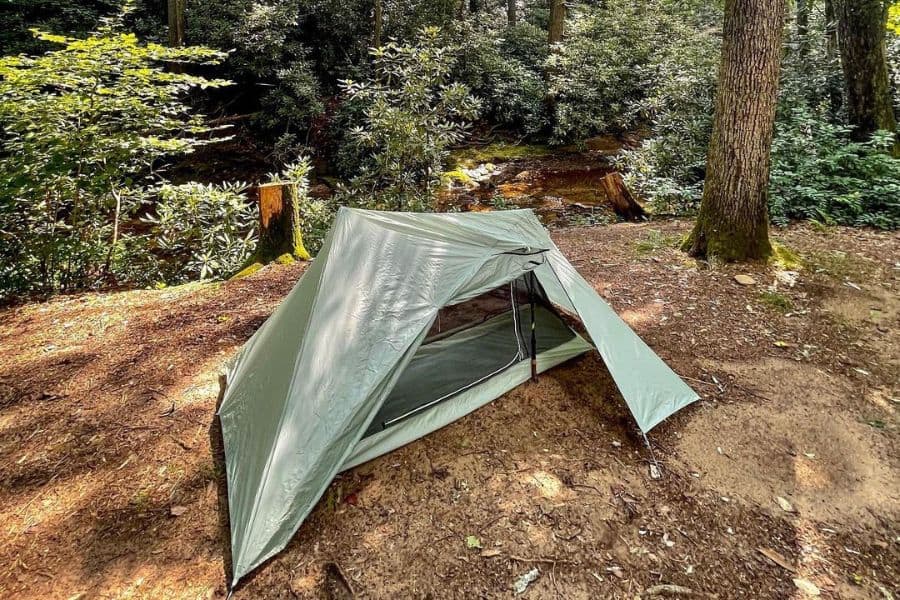
If you’re set on getting an add-on vestibule, there are a few things to keep in mind first.
Tent Compatibility
Keep in mind that you can’t buy just any add-on vestibule and attach it to your tent. Each vestibule is designed to fit a specific model and, in most cases, they’re not compatible with other tents.
The first thing you should do is check whether there’s a vestibule available for your tent model. Make sure you get the one designed specifically for your tent’s size, or it might not fit well.
Size and Shape
Certain models offer more than one type of vestibule.
A good example is REI Wonderland, which has a huge mudroom and an attached awning available for purchase as an add-on.
Other tent models, like Zempire Aerobase, offer vestibules in different sizes.
Depending on the amount of stuff you’re carrying and the number of people, you can choose which vestibule size works best for you.
Material Quality and Durability
Let’s be honest, a bad-quality vestibule is simply a waste of money. If it rips easily and doesn’t provide decent weather resistance, then it doesn’t fulfill its purpose.
A vestibule should have at least some degree of water resistance, with taped seams and inverted stitching.
These qualities will prevent raindrops from getting through the material during a pour. You don’t want a material that’s too thin, as it can sag under the weight of the rain.
If the vestibule has a door that can be zipped up, make sure to check out the zippers as well.
At the very least, they should feature an anti-snag cover that prevents damage to the material from constant opening and closing.
Ease of Use and Setup
No one wants to waste time setting up a complicated vestibule. If your tent requires less than 10 minutes to pitch, then it doesn’t make any sense to spend twice that amount attaching a vestibule to it.
Ideally, you want a vestibule that can simply be clipped onto the pitched tent.
Typically, they’re designed in such a way that the fabric overlaps with the rainfly, which practically connects them together.
Then, you simply stake down the opposite edge, keeping the vestibule walls taut.
FAQs
How do you set up and use a tent vestibule?
The exact process depends on the type of vestibule, but there are a few general rules to follow when setting up.
Attach the top corners of the vestibule to the pre-assembled tent. Then, stake down the opposite corners, adjusting the tension with guylines if necessary. And that’s pretty much it!
Can a tent vestibule fit any tent, or are they specific to certain models?
Add-on vestibules are typically designed to fit a specific model. And, in case a certain tent model comes in different capacities, there will be a designated vestibule size for each capacity.
Are there any downsides or drawbacks to using a tent vestibule?
The main drawback to having a tent vestibule is the added weight to your pack. However, if you’re driving up to the campsite, this isn’t something you need to be bothered with.
How can you maintain and care for your tent vestibule to ensure its longevity?
You should take care of your tent vestibule the same way you take care of your tent. First, you should clean it of dirt and debris after every camping trip.
Then, make sure to dry it completely before storing it away with your tent. When you are storing your tent and vestibule, it’s important to keep them in a dry and cool space, away from direct sunlight.
Are there any alternative options to a tent vestibule for creating additional space or storage in a tent?
If there’s no vestibule available for your tent model, it’s not the end of the world.
A tarp can be a great alternative for creating additional space for storing gear outside the tent. You can even set up the tarp to serve as a shelter from weather elements.
Can you cook in a tent vestibule?
You can cook in a tent vestibule as long as you keep a flap or zipper open to add ventilation. Camping stoves can release toxic gases, so it’s important to get fresh air into the vestibule to keep everyone safe.
Because of this, it’s best to only use your vestibule as a cooking space in bad weather, when cooking outside wouldn’t be as successful.
To Sum Things Up
A tent vestibule can be quite a handy addition to your camping gear.
Whether for storing gear or hanging out during bad weather, a vestibule provides you with additional outdoor space for multiple purposes.
More on Tents:
- Camping Tent Sizes & What Size Tent Do I Need?
- Pop Up Tent VS Regular Tent: Which is Better?
- Dome Tent VS Cabin Tent – What is the difference?
- Tent Vs Hammock – Which Kind Of Camping Is Right For You?


